The overall goal of this laboratory is to elucidate the relationship between structures and mechanical behavior of hard tissues at all length scales: from nano to macro and from molecules to the whole organ. Based on the understanding, we intend to develop effective strategies for prediction and prevention of aging/disease related failure of the tissues. Clinically, our interests are focused on the treatment of osteoporotic, fatigue, and age-related bone fractures.
Our research group is composed of post-doctoral research fellows, Ph.D’s, Master students, Undergraduates, Research Assistants and Research Engineers from both Mechanical (ME) and Biomedical Engineering (BME) programs. We also collaborate with other laboratories and research groups in the San Antonio area to enhance our research expertise in Biomaterials, Biophysics, Cell Biology and Biochemistry.
Areas of Current and Past Research
1. Nanomechanics of bone
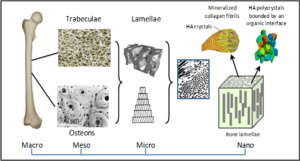
- Structural model of lamella: Mineralized collagen fibrils embedded in a hybrid extrafibrillar nanocomposite.
- Elastic behavior
- Plastic behavior
- Viscoelasticity
- Failure mechanisms
1.1 Computational modeling of bone at ultrastructural levels
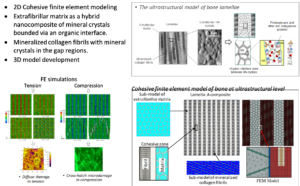
1) Liqiang Lin, Xiaodu Wang, Xiaowei Zeng: An improved interfacial bonding model for material interface modeling, Engineering Fracture Mechanics, (2017) 169: 276-291.
2) Liqiang Lin, Jitin Samuel, Xiaodu Wang, and Xiaowei Zeng: Contribution of extrafibrillar matrix to the mechanical behavior of bone using a novel cohesive finite element model, Journal of Mechanical Behavior of Biomedical Materials, (2017) 65: 224-235.
3) Mohammad Maghsoudi-Ganjeh, Liqiang Lin, Xiaodu Wang, and Xiaowei Zeng: Computational investigation of ultrastructural behavior of bone using a cohesive finite element approach, Biomechanics and Modeling in Mechanobiology (2019) 18:463–478
1.2 Synchrotron X-ray scattering studies of bone nanomechanics
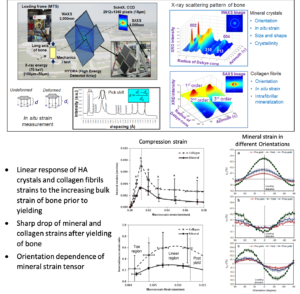
1) Giri, J. Almer, X. Neil Dong, and X. Wang: In situ mechanical behavior of mineral crystals in human cortical bone under compressive load using synchrotron X-ray scattering techniques, Journal of Mechanical Behavior of Biomedical Materials, 14 (2012) 101-112.
2) X. Dong, J. Almer, and X. Wang: Post-yield nanomechanics of human cortical bone in compression using synchrotron x-ray scattering techniques, J. Biomech. 44 (2011) 676-682.
1.3 Effect of matrix water on in situ mechanical behavior of bone

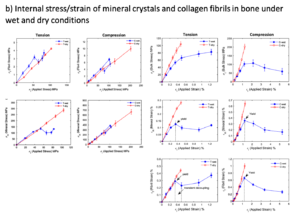
1) Jitin Samuel, Debarshi Sinha, Cong-Gui Zhao, and Xiaodu Wang: Water residing in small ultrastructural spaces plays a critical role in the mechanical behavior of bone, Bone, (2014) 59: 199-206.
2) Wang and Q. Ni: Determination of cortical bone porosity and pore size distribution using a low field NMR approach, J. Orthop. Res. 21 (2003) 312-319.
3) Ni, J.D. King, and X. Wang: The characterization of human compact bone structure changes by low-field nuclear magnetic resonance, Measurement Sci. & Tech. 15 (2004) 58-66.
4) Ni, J. S. Nyman, X. Wang, A. De Los Santos, and D.P. Nicolella: Assessment of water distribution changes in human cortical bone by nuclear magnetic resonance, Meas. Sci. Technol. 18 (2007) 1–9.
1.4 Ultrastructural origins of osteogenesis imperfecta (OI) bone
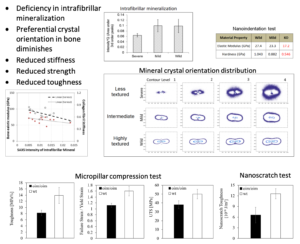
1) Mohammad Maghsoudi-Ganjeh, Wei Gao, Xiaodu Wang, and Xiaowei Zeng: Intrafibrillar mineralization deficiency and osteogenesis imperfecta mouse bone fragility, 2020 JBMR to be submitted.
2. Role of Proteoglycans in Sustaining the Toughness of Bone
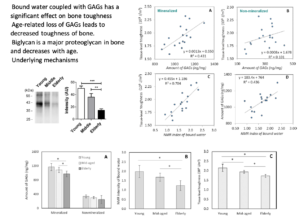
1) Wang, R. Hua, A. Ahsan, Q. Ni, Y. Huang, S. Gu, and J.X. Jiang: Age-related deterioration of bone toughness is related to diminishing amount of matrix glycosaminoglycans (GAGs), JBMR Plus (2018) 2 (3) 164-173.
2) Xiaodu Wang, Haoran Xu, Yehong Huang, Sumin Gu, and Jean Jiang: Coupling effect of water and proteoglycan on the in situ toughness of bone, JBMR, (2016) 31(5): 1026-1029.
3. Digital Model of Trabecular Bone
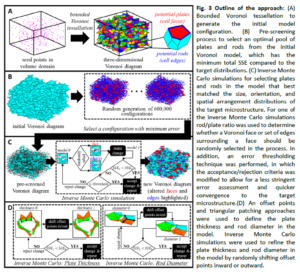
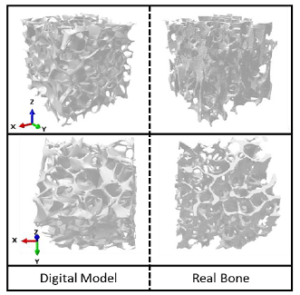
1) Feng Zhao, Matthew Kirby, Anuradha Roy, Yizhong Hu, X. Edward Guo, and Xiaodu Wang: Commonality in the microarchitecture of trabecular bone: A preliminary study, Bone (2018) 111: 59–70
2) Kirby, A. Morshed, J. Gomez, P. Xiao, Y. Hu, X. E. Guo, and X. Wang: Three-dimensional rendering of trabecular bone microarchitecture using a probabilistic approach, Biomechanics and Modeling in Mechanobiology, 2020, DOI: 10.1007/s10237-020-01286-8.
4. AI Based Prognosis of Bone Fracture Risks
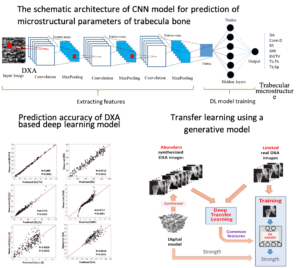
1) Pengwei Xiao, Tinghe Zhang, Xuanliang N Dong, Yan Han, Yufei Huang, Xiaodu Wang: DXA Image Based Deep Learning of Trabecular Bone Microstructural Features, 2020 Bone submitted
- Structural model of lamella: Mineralized collagen fibrils embedded in a hybrid extrafibrillar nanocomposite
- Elastic Behavior
- Plastic Behavior
- Viscoelasticity
- Failure Mechanisms
